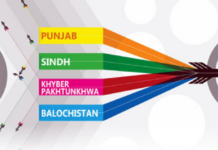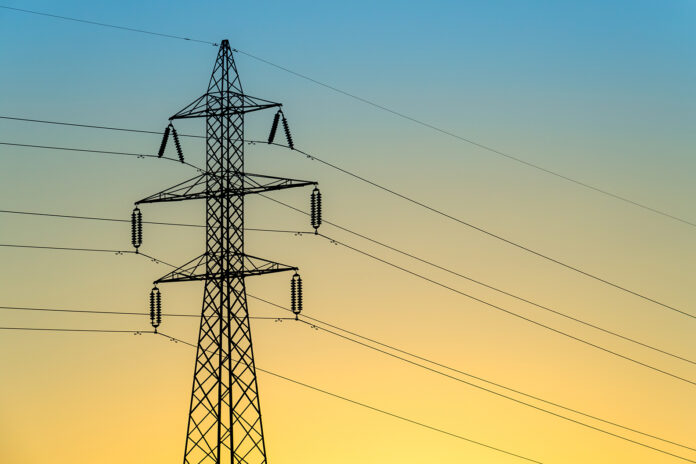ISLAMABAD: Amid the flood devastation, thousands of households remain without electricity as hundreds of feeders and dozens of grid stations across multiple provinces are still under repair.
As per details, Pakistan’s Power Division has reported significant but incomplete progress in restoring electricity to flood-affected areas, with many feeders and grid stations still offline as of 29 August and full recovery is expected in early September 2025.
According to the latest situation report, field teams of distribution companies (Discos) remain engaged in round-the-clock efforts, with full recovery expected between 31 August and 5 September in the worst-hit districts.
The report detailed extensive damage across several Disco jurisdictions. In Peshawar Electric Supply Company (Pesco) territory, which includes Swat, Buner, Shangla, Swabi and Dera Ismail Khan, 12 grid stations and 91 feeders were initially knocked out by flooding. Of these, 79 feeders have been fully restored and 12 partially brought back online.
In Gujranwala Electric Power Company (Gepco) service areas covering Sialkot, Narowal, Wazirabad and Hafizabad, 10 grids and 86 feeders were affected. Gepco teams have restored 62 feeders completely while 19 remain partially operational.
In the Lahore Electric Supply Company (Lesco) region, which saw urban and peri-urban flooding in Lahore, Kasur and Okara, 46 feeders were disrupted. Lesco has managed partial restoration so far, with the Power Division estimating that complete recovery will be achieved between 31 August and 1 September.
Faisalabad Electric Supply Company (Fesco) reported 15 grid stations and 43 feeders disrupted across Chiniot, Jhang, Sargodha, Mianwali and parts of Dera Ismail Khan. Officials said temporary restoration has been achieved in affected areas, though permanent repairs are still underway.
In Multan Electric Power Company (Mepco) jurisdiction, floods damaged 11 grid stations and 63 feeders. The Power Division said restoration will begin immediately once floodwaters recede, indicating that many areas remain submerged and inaccessible to repair crews.
Tribal Electric Supply Company (Tesco) reported that two feeders in North Waziristan were brought back online temporarily. Complete restoration in that region is expected by 5 September, reflecting the challenging terrain and continuing flood disruptions.
The Power Division emphasized that DISCOs field teams are working day and night to restore service, but warned that full recovery timelines vary depending on local flood conditions. “Electricity supply in the affected areas will be fully restored at the earliest possible,” the report said, noting that safety considerations remain paramount before reconnecting power lines in waterlogged zones.
Flood-related damage to electricity infrastructure has historically posed major challenges in Pakistan. Seasonal rains regularly inundate substations and feeders, causing both immediate outages and long-term equipment failures. The 2022 floods, which submerged one-third of the country, crippled transmission networks across Sindh, Balochistan and southern Punjab, requiring months of phased restoration. This year’s events, while less devastating in scale, have again underscored the sector’s vulnerability to climate-driven disasters.
According to industry sources, electricity distribution companies face mounting challenges due to both extreme weather and outdated infrastructure. Many feeders and transformers are decades old, making them more susceptible to collapse under flood conditions. Experts argue that without major investment in flood-resilient systems, including elevated substations and waterproofing technologies, Pakistan’s grid will remain exposed to repeated seasonal breakdowns.
IT is relevant to note that the slow pace of recovery in certain areas has also highlighted the logistical difficulties of restoration in flood-hit zones. Roads and bridges remain damaged in several districts, complicating access for repair crews. In some cases, helicopters and boats have been used to transport equipment and personnel, but officials admit progress is slower than desired.
The timeline given by the Power Division suggests that urban centres like Lahore and Sialkot may see faster recovery due to better access and resources, while rural districts in Khyber Pakhtunkhwa and South Punjab may remain partially disrupted until early September.
For residents, prolonged outages have added to the hardships caused by flooding, with water pumping, hospital operations and food preservation severely affected. In Swat and Dera Ismail Khan, local reports indicated that communities have relied on small diesel generators where available, though fuel shortages have compounded difficulties.
Official sources in the power division on condition of anonymity said that temporary restorations are being carried out cautiously to avoid electrocution risks. “Waterlogged areas cannot be re-energized until conditions are safe,” one official explained, echoing past warnings that hasty reconnections have sometimes led to fatal accidents.
Looking ahead, industry sources also said that the latest outages have highlighted the need for a long-term climate adaptation plan for Pakistan’s power sector. With monsoons growing more intense under global warming, resilience investments in both generation and distribution infrastructure are becoming increasingly urgent. The National Electric Power Regulatory Authority (NEPRA) has in past hearings urged DISCOs to strengthen preventive measures, though progress has been uneven.
For now, the government is banking on fast-paced restoration to limit public frustration. The Power Division reiterated that full recovery is expected by early September, though much depends on how quickly floodwaters recede. Until then, millions of Pakistanis in the affected regions will continue to face restricted electricity supply amid one of the most testing monsoon seasons of recent years.























